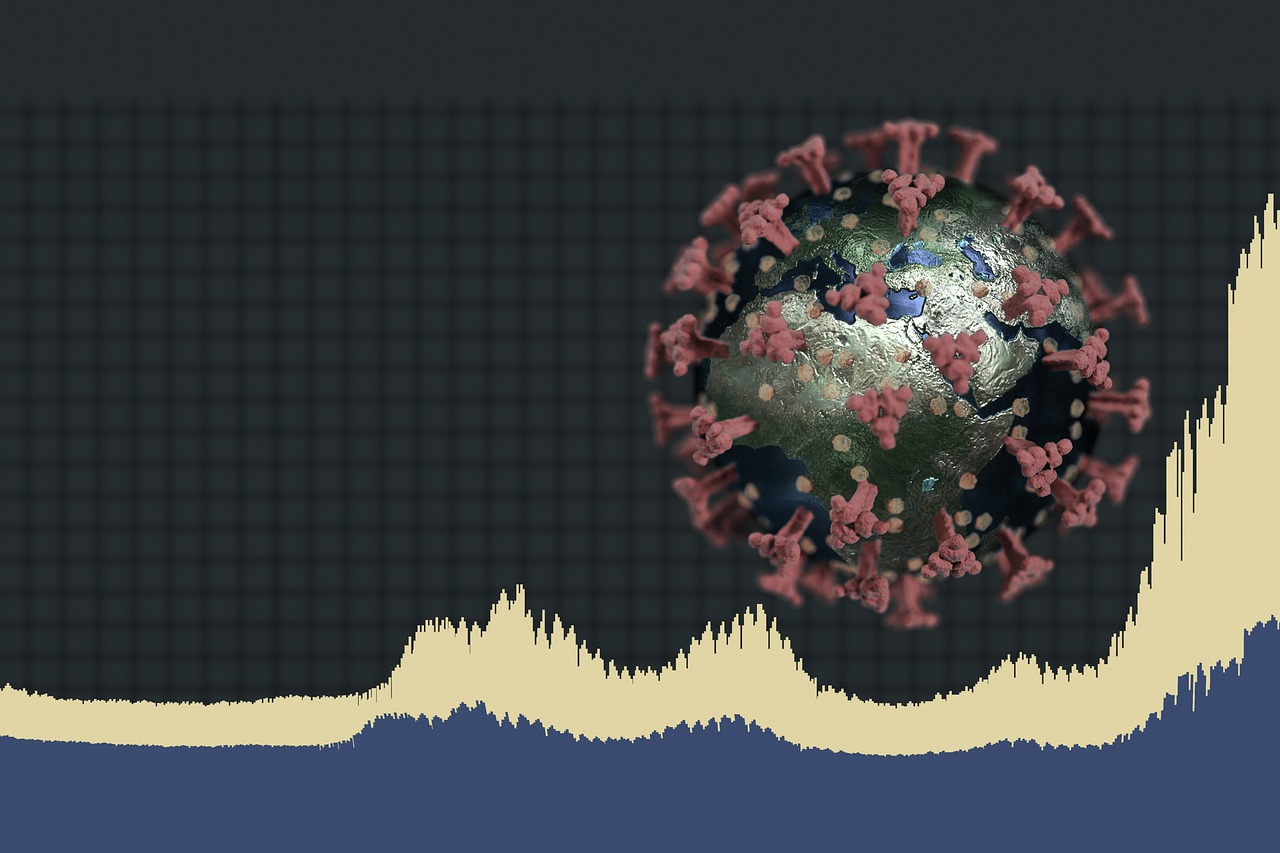Introduction
Agriculture has always been a battle against nature’s pests and diseases. Throughout history, farmers have employed various methods to protect their crops from these threats, ranging from traditional practices to the use of chemical pesticides. However, the agricultural landscape is evolving, driven by a growing awareness of environmental sustainability and the need to produce more food for a growing global population. This has spurred innovation in pest and disease management, leading to more efficient, environmentally friendly, and sustainable solutions.
Agriculture’s ongoing battle against nature’s pests and diseases has been a constant throughout human history. Farmers, as stewards of the land, have long been challenged to protect their crops from a myriad of threats, ranging from tiny insect pests to insidious plant pathogens. Over the centuries, these guardians of the soil have employed a diverse array of methods to safeguard their harvests, reflecting the ingenuity and adaptability of humankind.
Historical Pest Management: Early agricultural societies developed an understanding of crop pests and diseases and devised various strategies to combat them. These strategies included crop rotation to break pest and disease cycles, companion planting to deter pests, and the selective breeding of crop varieties with natural resistance to common threats.
The Chemical Era: The 20th century ushered in a new era of pest and disease management with the introduction of chemical pesticides. These powerful chemicals offered immediate and effective control over agricultural threats, leading to dramatic increases in crop yields. However, their widespread use raised concerns about environmental pollution, human health risks, and the development of pesticide-resistant pests.
Environmental Consciousness: Growing awareness of the environmental impacts of chemical pesticides and the need for sustainable agriculture prompted a shift in mindset. Farmers, researchers, and policymakers began exploring alternative approaches to pest and disease management that would minimize harm to ecosystems and human health.
Integrated Pest Management (IPM): Integrated Pest Management emerged as a paradigm shift in agriculture. It advocates a holistic approach that combines multiple strategies to manage pests and diseases efficiently and sustainably. IPM incorporates biological control, crop rotation, habitat preservation for beneficial insects, and the judicious use of pesticides only when necessary.
Biotechnology and Genetic Engineering: Advances in biotechnology and genetic engineering have enabled the development of genetically modified (GM) crops with built-in resistance to pests and diseases. These crops reduce the need for chemical pesticides, enhance crop yields, and contribute to sustainable agriculture.
Precision Agriculture: The digital revolution has also left its mark on pest and disease management. Precision agriculture leverages technology, such as drones and sensors, to monitor fields in real-time, enabling farmers to make data-driven decisions about when and where to apply pest control measures. This approach optimizes resource use and minimizes environmental impact.
Organic and Sustainable Farming: Many farmers are transitioning to organic and sustainable farming practices, which prioritize natural and environmentally friendly pest and disease management strategies. These methods include organic pesticides, beneficial insects, and soil health improvement to bolster crop resilience.
Global Collaboration: In an interconnected world, the fight against pests and diseases requires global collaboration. International organizations, research institutions, and farmers from different regions share knowledge and best practices to develop innovative, sustainable, and region-specific solutions.
As we navigate the challenges of the 21st century, the agricultural landscape continues to evolve. The quest for efficient, environmentally friendly, and sustainable solutions to pest and disease management remains paramount. With the growing global population and the need to feed billions, innovation in this field stands as a testament to human adaptability and resilience in the face of ongoing agricultural challenges. The battle against nature’s pests and diseases endures, but our approach to it has grown more sophisticated and sustainable, reflecting a deeper understanding of the delicate balance between agriculture and the environment.
To delve further into this matter, we encourage you to check out the additional resources provided here: Agriculture Development, Pesticide Application and Its Impact on the …
One of the significant shifts in modern agriculture is the adoption of Integrated Pest Management (IPM). IPM is a holistic approach that combines various strategies to minimize the impact of pests and diseases on crops. It emphasizes the use of biological control agents, such as predators and parasites, to keep pest populations in check. By relying less on chemical pesticides, IPM reduces the environmental impact and promotes the long-term health of ecosystems.
The adoption of Integrated Pest Management (IPM) represents a pivotal transformation in modern agriculture, ushering in a more sustainable and environmentally conscious era of crop protection. This innovative approach not only addresses the immediate challenges posed by pests and diseases but also considers the long-term health of ecosystems and the well-being of future generations.
At its core, IPM is a comprehensive strategy that harmonizes various techniques and tools to effectively manage pests while minimizing the negative impact on the environment. Gone are the days when chemical pesticides were the first and only line of defense. IPM encourages a more nuanced and ecologically friendly approach.
One of the standout features of IPM is its emphasis on biological control agents. These beneficial organisms, such as predators and parasites, are introduced into agricultural ecosystems to prey on or parasitize pest species. By harnessing the power of nature’s own checks and balances, IPM helps keep pest populations in check without resorting to chemical interventions. This not only reduces the risk of pesticide resistance among pests but also promotes biodiversity by creating a healthier, more balanced ecosystem.
By relying less on chemical pesticides, IPM achieves several vital goals. First and foremost, it significantly reduces the environmental impact associated with the widespread use of chemicals. Harmful residues that can contaminate soil, water, and air are minimized, leading to cleaner and more sustainable agricultural practices. This, in turn, benefits both human health and the broader environment.
Moreover, IPM promotes the long-term health of ecosystems by fostering biodiversity. When chemical pesticides are used indiscriminately, they often harm not only the targeted pests but also beneficial insects, birds, and other organisms crucial to ecosystem stability. IPM seeks to restore this balance, allowing nature to function more harmoniously.
The adoption of IPM is not just a reflection of the changing tides in agriculture; it’s a testament to humanity’s growing awareness of the need for responsible stewardship of the planet. As we confront the challenges of feeding a burgeoning global population while safeguarding our environment, IPM stands as a beacon of hope. It demonstrates that through innovation, science, and a deep respect for the intricate web of life on Earth, we can cultivate the crops we need without compromising the future of our planet. In essence, IPM is a step forward in our ongoing quest for sustainable and ethical agriculture.
Explore this link for a more extensive examination of the topic: California Department of Food and Agriculture
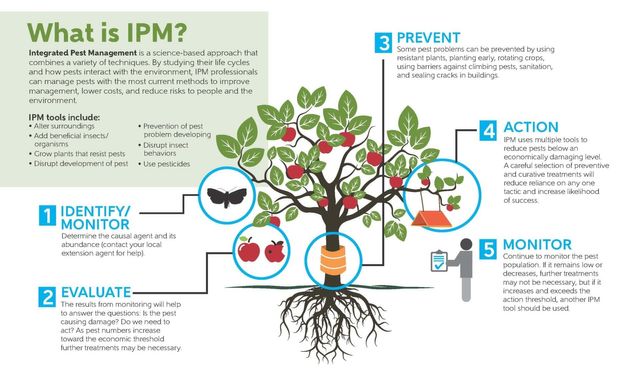
Advancements in biotechnology and genetic engineering have allowed scientists to develop crops with built-in resistance to pests and diseases. For example, genetically modified (GM) crops can produce their insecticides or possess traits that make them less appealing to pests. This reduces the need for chemical treatments and benefits both the environment and farmers’ bottom lines.
The remarkable strides in biotechnology and genetic engineering have ushered in a new era of agriculture, where the development of genetically modified (GM) crops offers innovative solutions to some of the most pressing challenges faced by farmers worldwide. These crops are equipped with built-in resistance to pests and diseases, representing a pivotal advancement that has far-reaching implications for agriculture, the environment, and the economy.
Enhanced Pest and Disease Resistance: GM crops are engineered to withstand the onslaught of pests and diseases more effectively than their conventional counterparts. They can produce their insecticides or harbor traits that deter pests from feeding on them. For example, Bt cotton produces a protein toxic to certain insect pests, reducing the need for chemical insecticides. This enhanced resistance not only protects crop yields but also minimizes the environmental impact of agriculture by reducing the use of chemical pesticides.
Reduced Chemical Treatments: The reduced need for chemical treatments is one of the most tangible benefits of GM crops. By minimizing the reliance on chemical pesticides and herbicides, these crops contribute to a significant reduction in chemical runoff into waterways, soil contamination, and harm to non-target organisms. This environmentally friendly approach aligns with the principles of sustainable agriculture and promotes the preservation of ecosystems.
Economic Benefits for Farmers: GM crops offer substantial economic advantages to farmers. By reducing the damage caused by pests and diseases, these crops often result in higher yields and improved crop quality. Farmers can also benefit from lower input costs, as they spend less on pesticides and herbicides. Additionally, the reduced need for labor-intensive pest management can free up farmers’ time and resources for other essential tasks, further enhancing their economic well-being.
Food Security and Global Agriculture: GM crops play a crucial role in ensuring food security on a global scale. As the world population continues to grow, the demand for food intensifies. GM crops with enhanced resistance to pests and diseases contribute to stable and reliable crop production, helping to meet the nutritional needs of a growing global population. This is particularly important in regions prone to crop losses due to pests and diseases.
Challenges and Regulation: It’s important to note that the adoption of GM crops also raises important questions related to safety, environmental impacts, and ethical considerations. The regulation of GM crops varies by country and is subject to rigorous evaluation to ensure their safety for human consumption and environmental sustainability.
In conclusion, the development of GM crops with built-in resistance to pests and diseases is a groundbreaking achievement in agricultural science. These crops contribute to higher yields, reduced chemical treatments, enhanced environmental sustainability, and improved economic outcomes for farmers. While ongoing research and responsible regulation are essential to address concerns and challenges, GM crops represent a powerful tool in the pursuit of a more sustainable and resilient global agricultural system.
If you’d like to dive deeper into this subject, there’s more to discover on this page: Executive Order on Advancing Biotechnology and Biomanufacturing …

Precision agriculture leverages technology, including drones, satellite imagery, and data analytics, to monitor fields and apply inputs more efficiently. This technology allows farmers to detect early signs of pest or disease outbreaks and respond promptly. By applying treatments only where and when needed, precision agriculture minimizes the use of pesticides and reduces production costs.
Precision agriculture, with its impressive technological arsenal, represents a quantum leap in the way we approach farming. It’s not merely about embracing the latest gadgets; it’s a holistic strategy that harnesses innovation to cultivate crops more efficiently and sustainably.
At the heart of precision agriculture are data-driven insights, made possible through a combination of drones, satellite imagery, and advanced analytics. These tools provide farmers with a bird’s-eye view of their fields, enabling them to monitor every inch with unprecedented precision. This level of oversight means that early signs of pest or disease outbreaks don’t go unnoticed.
Imagine a scenario where a drone, equipped with high-resolution cameras and sensors, patrols the fields. It captures images and data, which are then analyzed by sophisticated algorithms. If there’s an anomaly – a patch of discolored leaves or signs of infestation – it’s flagged immediately. This proactive approach allows farmers to respond promptly, targeting the affected areas with surgical precision.
One of the most significant advantages of precision agriculture is the ability to minimize the use of pesticides. Traditional farming often necessitates the blanket application of chemical treatments, regardless of the actual need. This not only incurs unnecessary costs but also contributes to environmental concerns. Precision agriculture, on the other hand, adheres to the principle of “just enough, just in time.” It ensures that treatments are applied only where and when they are needed most, sparing the rest of the field and the surrounding ecosystem from unnecessary exposure.
This reduction in pesticide use isn’t just an economic boon for farmers; it’s an environmental win. It minimizes the impact on non-target species, reduces the risk of pesticide resistance, and lessens the likelihood of chemical runoff into nearby water bodies.
Moreover, precision agriculture optimizes resource allocation in other areas too. From water usage to fertilizer application, every aspect of farming is fine-tuned for maximum efficiency. This not only conserves valuable resources but also contributes to a more sustainable agricultural system.
In essence, precision agriculture represents a transformative shift towards smarter, more sustainable farming practices. By harnessing technology to monitor, analyze, and respond with precision, it empowers farmers to cultivate crops more efficiently, reduce environmental impact, and embrace a future where the bounty of the land is maximized while its resources are conserved.
For a comprehensive look at this subject, we invite you to read more on this dedicated page: Agriculture Innovation: 10 Tech Trends to Watch in 2023 …
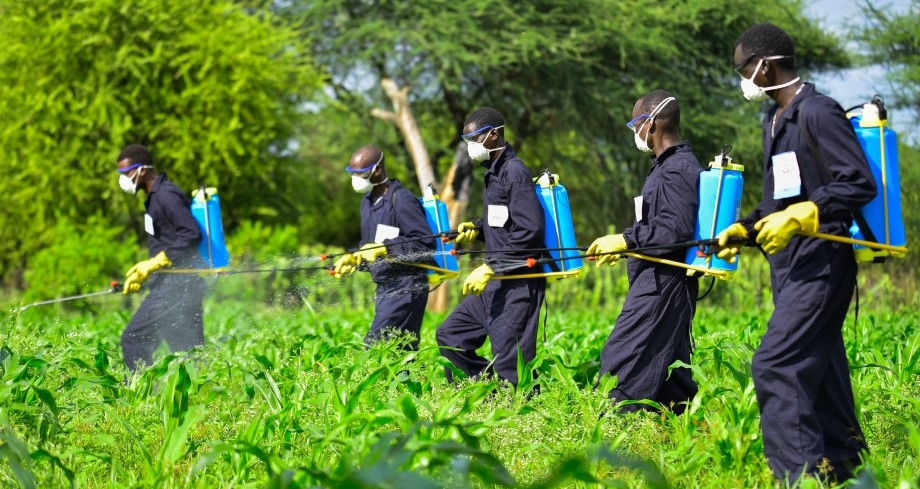
Organic farming practices, which avoid synthetic chemicals, have gained popularity as consumers seek healthier and more sustainable food options. In this context, biopesticides have emerged as a valuable tool. These are naturally occurring substances or microorganisms that control pests and diseases while posing minimal risks to human health and the environment. Biopesticides are a crucial component of organic farming and integrated pest management.
Organic farming practices have witnessed a remarkable surge in popularity, driven by the growing demand from consumers who prioritize healthier and more sustainable food choices. Amid this shift in consumer preferences, the spotlight has fallen upon biopesticides, which have emerged as a potent ally in the pursuit of eco-friendly and sustainable agriculture. These biopesticides represent a natural and harmonious approach to pest and disease control, offering several noteworthy advantages in the realm of organic farming and integrated pest management.
Environmental Sustainability: Biopesticides are derived from natural sources, such as plants, microorganisms, or beneficial insects. As a result, they break down more rapidly in the environment compared to synthetic chemical pesticides, reducing the risk of long-lasting ecological damage. This aligns perfectly with the principles of organic farming, which prioritize environmental sustainability.
Minimal Harm to Non-Target Organisms: Unlike conventional chemical pesticides, biopesticides are often highly specific in their mode of action. They target the pests or diseases in question with minimal impact on beneficial insects, birds, or other non-target organisms. This precision helps maintain biodiversity and ecological balance in farming ecosystems.
Reduced Residue Levels: One of the primary concerns with conventional farming is the presence of pesticide residues on crops. Biopesticides leave significantly lower or no residues, ensuring that the end product is healthier for consumers and requires less stringent regulation.
Resistance Management: Pests and diseases can develop resistance to chemical pesticides over time, rendering them less effective. Biopesticides offer an alternative that works through different mechanisms, reducing the likelihood of resistance development and preserving their efficacy.
Healthier Food: Organic farming, bolstered by biopesticides, produces food with fewer synthetic chemicals. This appeals to consumers seeking produce free from harmful residues and contributes to better overall food quality and safety.
Farmworker Safety: Organic farming and biopesticide use can create safer working environments for farm laborers. The reduced exposure to toxic chemicals enhances the health and well-being of those working in the fields.
Improved Soil Health: The use of biopesticides often promotes soil health by encouraging beneficial microorganisms and reducing the harmful impact of synthetic chemicals on soil ecosystems. This fosters sustainable agricultural practices over the long term.
Economic Viability: While organic farming practices can initially require a transition period and investment, biopesticides can ultimately reduce production costs. Fewer inputs, coupled with higher market prices for organic produce, can make organic farming economically viable and competitive.
Consumer Demand: The rise in consumer awareness about food quality and environmental concerns has created a strong demand for organic products. The integration of biopesticides into organic farming aligns with this demand, providing consumers with products that meet their ethical and nutritional expectations.
Innovation and Research: The growing interest in biopesticides has spurred innovation and research in the field. This has led to the development of new, effective, and sustainable biopesticide solutions, further enhancing their utility in organic farming and beyond.
In summary, the adoption of biopesticides within organic farming practices is a testament to agriculture’s evolving landscape. It showcases the industry’s commitment to sustainability, environmental stewardship, and consumer well-being. As the world grapples with the need for a more sustainable and resilient food system, biopesticides stand as a valuable and indispensable tool, embodying the marriage of nature’s wisdom and modern agricultural practices.
Don’t stop here; you can continue your exploration by following this link for more details: Training manual for ORGANIC AGRICULTURE
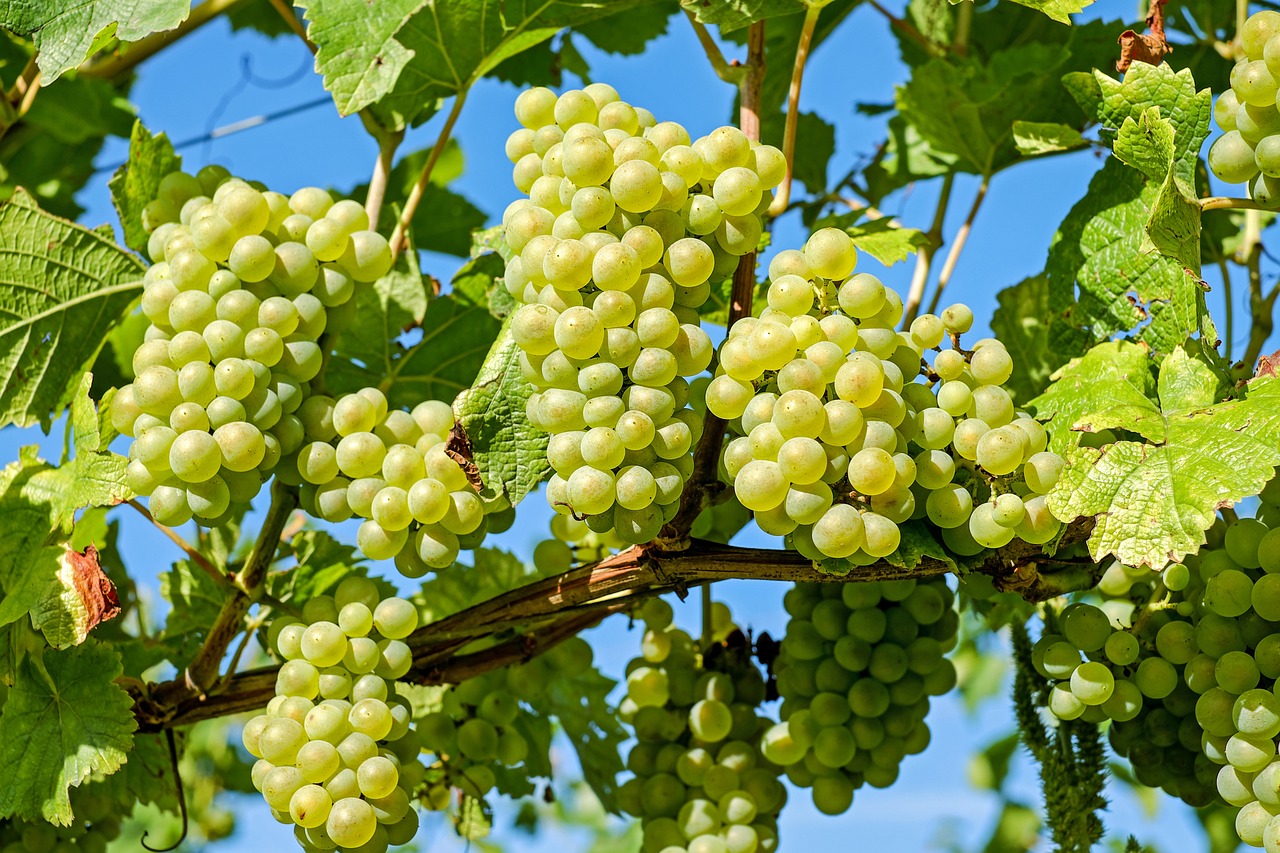
Cutting-edge technologies like remote sensing and artificial intelligence are transforming pest and disease monitoring. Satellites and drones equipped with sensors can capture detailed data about crop health, enabling early detection of stress caused by pests or diseases. Artificial intelligence algorithms can analyze this data in real time, providing farmers with actionable insights and recommendations for pest and disease management.
The integration of cutting-edge technologies, such as remote sensing and artificial intelligence, into agriculture has ushered in a new era of precision pest and disease monitoring. This transformative approach not only enhances crop health management but also contributes to sustainable and efficient farming practices.
Precision Remote Sensing
Remote sensing technologies, including satellites and drones, have revolutionized the way we monitor crop health and detect the early signs of stress caused by pests and diseases. Satellites orbiting high above the Earth can capture large-scale data about crop conditions, allowing for extensive coverage and monitoring of entire agricultural regions. Meanwhile, drones equipped with advanced sensors can provide high-resolution images and data for localized assessments.
Early Detection and Intervention
The real power of remote sensing lies in its ability to detect subtle changes in crop health that may not be visible to the naked eye. Pests and diseases often manifest their effects in ways that are not immediately apparent, such as changes in leaf color, temperature, or moisture levels. Remote sensing technologies can pick up these indicators, even before the human eye can detect them. This early detection enables timely and targeted intervention, reducing the potential for crop damage and yield loss.
Artificial Intelligence for Data Analysis
While remote sensing technologies gather a wealth of data, the sheer volume and complexity of this information require advanced analysis techniques. This is where artificial intelligence (AI) comes into play. AI algorithms can process and analyze the vast amount of data collected by satellites and drones in real time. By identifying patterns, anomalies, and trends, AI can pinpoint areas of concern and assess the severity of pest or disease infestations.
Actionable Insights and Recommendations
One of the most significant advantages of AI-powered pest and disease monitoring is its ability to provide farmers with actionable insights and recommendations. Based on the data analysis, AI algorithms can generate reports and alerts that inform farmers about the presence of pests or diseases, their location, and the extent of the damage. Additionally, AI can offer tailored recommendations for pest and disease management strategies, including the optimal timing for interventions and the selection of suitable control methods.
Sustainable and Efficient Farming
The integration of remote sensing and AI not only improves pest and disease management but also contributes to more sustainable and efficient farming practices. By reducing the need for broad-spectrum chemical pesticides and minimizing overuse, these technologies align with the principles of integrated pest management (IPM) and environmentally friendly agriculture. This approach not only saves farmers money but also reduces the environmental impact of farming.
Data-Driven Decision-Making
Ultimately, the combination of remote sensing and AI empowers farmers with data-driven decision-making capabilities. It enhances their ability to respond swiftly to emerging pest and disease threats, mitigate crop losses, and optimize resource allocation. It also promotes more resilient and productive agricultural systems in an era when climate change and evolving pest and disease patterns pose significant challenges to global food security.
In conclusion, the convergence of remote sensing and artificial intelligence in pest and disease monitoring represents a game-changing advancement in agriculture. It empowers farmers with the tools and knowledge needed to protect their crops more effectively, reduce environmental impacts, and enhance overall farm sustainability. As technology continues to advance, the potential for further innovation in pest and disease management remains vast, promising a brighter and more resilient future for agriculture worldwide.
Should you desire more in-depth information, it’s available for your perusal on this page: Understanding the potential applications of Artificial Intelligence in …

Climate change brings new challenges to agriculture, including the shifting geographical distribution of pests and diseases. To address this, researchers are developing climate-resilient crop varieties that can withstand changing environmental conditions and resist emerging threats. These crops offer a proactive approach to pest and disease management in a changing climate.
The impact of climate change on agriculture is a multifaceted challenge that extends beyond the realm of unpredictable weather patterns and temperature shifts. One of the most concerning aspects is the shifting geographical distribution of pests and diseases, which poses a substantial threat to global food security. To tackle this looming crisis, researchers are diligently working on the development of climate-resilient crop varieties.
Changing Pest Dynamics: Climate change disrupts the established patterns of pests and diseases. As temperatures rise or shift, pests and pathogens migrate to new regions, bringing unfamiliar threats to crops. This unpredictability can lead to devastating crop losses, disrupting food supplies and livelihoods.
Resilient Crop Breeding: Researchers are pioneering crop breeding programs aimed at creating climate-resilient varieties. These new cultivars are meticulously selected and genetically modified to withstand the challenges posed by shifting pest pressures, evolving diseases, and altered climatic conditions.
Biodiversity and Resistance: Climate-resilient crops often draw from the wealth of genetic diversity within plant species. By identifying and incorporating natural resistance traits, researchers are bolstering crops’ innate ability to fend off pests and diseases, reducing the need for chemical interventions.
Strengthening Plant Immunity: Advances in biotechnology and genomics are allowing scientists to understand the molecular mechanisms behind plant immunity. This knowledge is harnessed to fortify crops against emerging threats, making them less susceptible to novel pests and diseases.
Adaptive Traits: Climate-resilient crops possess adaptive traits that enable them to thrive under varying environmental conditions. These traits can include drought tolerance, resistance to extreme temperatures, and the ability to adjust growth patterns in response to changing day lengths.
Reduced Reliance on Pesticides: Climate-resilient crops are designed to withstand pest attacks and diseases more effectively. As a result, farmers can reduce their reliance on chemical pesticides, mitigating the environmental impact and reducing the risk of pesticide resistance.
Global Collaboration: Researchers from diverse regions are collaborating on the development of climate-resilient crops. This global effort recognizes that pests and diseases, driven by climate change, are a shared challenge that requires collective solutions.
Local Adaptation: Climate-resilient crop varieties are tailored to local conditions, taking into account the specific challenges faced by farmers in different regions. This localized approach ensures that crops are well-suited to prevailing environmental factors.
Long-Term Food Security: The cultivation and adoption of climate-resilient crops are critical for long-term food security. These crops offer a proactive strategy to maintain stable yields and safeguard food supplies in the face of a changing climate.
Sustainable Agriculture: Climate-resilient crops align with the principles of sustainable agriculture by reducing the environmental impact of farming practices. They promote resilient and regenerative farming systems that are less vulnerable to the disruptions caused by climate change.
In summary, climate-resilient crop varieties represent a beacon of hope in the battle against the complex challenges posed by climate change in agriculture. These crops embody proactive strategies, harnessing the power of science and innovation to secure our food future, protect the livelihoods of farmers, and promote a sustainable and resilient global food supply.
Looking for more insights? You’ll find them right here in our extended coverage: The future of food and agriculture: Trends and challenges

Ensuring that farmers have access to the latest knowledge and tools for pest and disease management is essential. Extension services and agricultural education programs play a crucial role in disseminating information about innovative practices and technologies. Empowering farmers with the knowledge to make informed decisions enhances the adoption of sustainable pest and disease management strategies.
The empowerment of farmers through access to knowledge and modern tools for pest and disease management is pivotal in advancing agriculture’s sustainability and productivity. Expanding on the idea, we can highlight the significance of extension services, agricultural education, and the broader impacts of informed decision-making:
Enhancing Agricultural Resilience: In a world where climate change and evolving pest threats pose significant challenges to agriculture, providing farmers with the latest knowledge and tools is a fundamental strategy for building resilience. Equipped with up-to-date information, farmers can adapt their practices and mitigate risks more effectively.
Tailoring Solutions to Local Contexts: Extension services and agricultural education programs are instrumental in tailoring pest and disease management strategies to specific regions and farming systems. They take into account local conditions, crop varieties, and pest dynamics, ensuring that solutions are practical and effective.
Promoting Sustainable Practices: The dissemination of innovative practices and technologies through education channels encourages the adoption of sustainable farming methods. This includes integrated pest management (IPM) approaches that minimize chemical use, conserve natural predators, and maintain ecological balance.
Reducing Environmental Impact: Access to the latest knowledge helps farmers make informed decisions about pest and disease control methods, minimizing the environmental footprint of agriculture. Reduced pesticide use, for instance, can lead to improved water and soil quality, benefiting both ecosystems and communities.
Improving Crop Quality and Yield: Equipping farmers with cutting-edge information results in higher crop quality and yields. This not only ensures food security but also supports economic prosperity for farming communities.
Empowering Small-Scale Farmers: Extension services and agricultural education are particularly crucial for small-scale and subsistence farmers. By democratizing access to knowledge and technology, these programs empower vulnerable communities to improve their livelihoods and food security.
Fostering Innovation: Education and extension services are not just about conveying existing knowledge but also fostering innovation. Farmers who are well-informed are more likely to experiment with new techniques and adapt to changing conditions, driving agricultural progress.
Building Stronger Communities: These programs contribute to building stronger, more connected farming communities. Farmers often share knowledge and experiences with their peers, creating networks that support collective learning and problem-solving.
Global Food Security: At a global scale, ensuring that farmers have access to the latest knowledge is integral to food security. As the world’s population grows, so does the demand for food. Sustainable pest and disease management practices, disseminated through education and extension, are critical for meeting this demand.
Economic Impact: Beyond agricultural production, informed farmers have a positive economic impact on their regions. Increased yields and improved crop quality can stimulate economic growth and reduce poverty levels.
In conclusion, the dissemination of knowledge and tools for pest and disease management is not just an agricultural imperative; it’s a catalyst for broader social, economic, and environmental benefits. Extension services and agricultural education programs bridge the gap between innovation and implementation, ensuring that farmers are well-prepared to face the challenges of modern agriculture while contributing to a more sustainable and food-secure future.
Explore this link for a more extensive examination of the topic: Sustainable Agriculture Research & Education Program – What is …
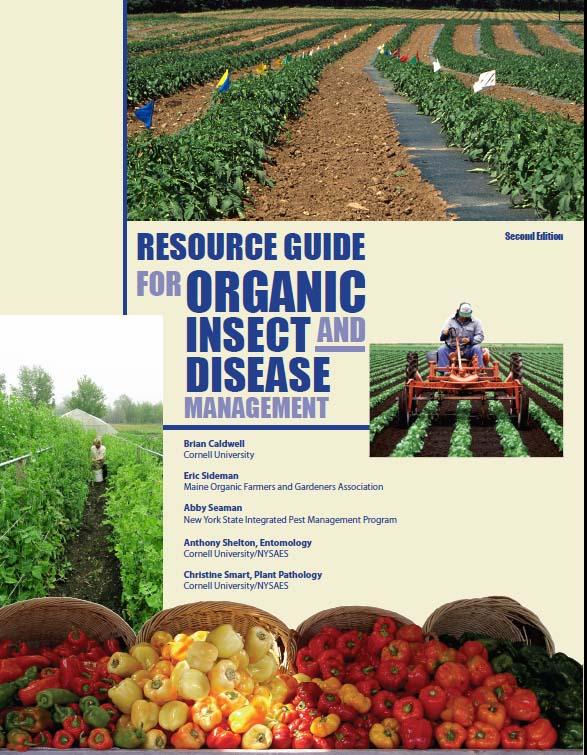
Conclusion
In conclusion, innovations in pest and disease management are revolutionizing agriculture. These advancements are not only helping to increase crop yields and reduce production costs but are also promoting environmental sustainability and food safety. As the world faces the dual challenges of feeding a growing population and mitigating the impact of climate change, the ongoing development and adoption of innovative pest and disease management practices will be key to the future of agriculture.
In conclusion, the ongoing wave of innovations in pest and disease management is nothing short of a revolution in agriculture. These advancements extend far beyond the immediate goal of boosting crop yields and trimming production costs. They hold the potential to usher in a new era of agriculture that is characterized by heightened environmental sustainability and enhanced food safety.
Environmental Sustainability: Many of these innovations are inherently sustainable. Integrated pest management, for example, prioritizes the use of biological controls and natural predators over chemical pesticides. This shift not only reduces the ecological impact of farming but also safeguards beneficial insects and biodiversity. Additionally, precision application technologies ensure that pesticides and treatments are used sparingly and only when necessary, minimizing their environmental footprint.
Food Safety: The adoption of advanced pest and disease management practices enhances food safety. Reduced reliance on chemical pesticides translates into fewer residues on crops, resulting in safer and healthier food for consumers. Furthermore, these practices reduce the risk of contamination by pathogens, such as those responsible for foodborne illnesses.
Resilience to Climate Change: As climate change introduces new pest and disease challenges, innovative management strategies are pivotal in building resilience. Crop varieties engineered for resistance to specific pests or diseases are becoming increasingly essential. These varieties reduce the vulnerability of crops to evolving threats, ensuring more stable food production even in changing climatic conditions.
Economic Viability: Beyond environmental and health benefits, these innovations contribute to the economic viability of farming. By reducing the need for costly inputs like chemical pesticides and the labor associated with manual pest control, farmers can improve their profitability. This, in turn, supports the long-term sustainability of agriculture and rural communities.
Global Food Security: As the global population continues to grow, the importance of innovative pest and disease management practices cannot be overstated. They are integral to ensuring food security by safeguarding crop yields and preventing losses due to pests and diseases. By minimizing crop losses, we can make substantial progress in meeting the food needs of an ever-expanding world population.
Research and Collaboration: The development of these practices depends on ongoing research and collaboration between scientists, farmers, and policymakers. Investment in research into resistant crop varieties, sustainable pest control methods, and predictive technologies is essential for staying ahead of emerging challenges.
In a world where the demand for food is escalating, and the specter of climate change looms large, the continued innovation and widespread adoption of pest and disease management practices are pivotal to the future of agriculture. They offer a pathway to producing more food with fewer resources while preserving the environment, enhancing food safety, and bolstering the resilience of farming systems. As we navigate the complexities of a changing world, these innovations represent a beacon of hope, pointing the way towards a more sustainable and secure global food supply.
To expand your knowledge on this subject, make sure to read on at this location: Smart Farming: Internet of Things (IoT)-Based Sustainable Agriculture
More links
Explore this link for a more extensive examination of the topic: Robert W. Holley Center for Agriculture & Health : USDA ARS
